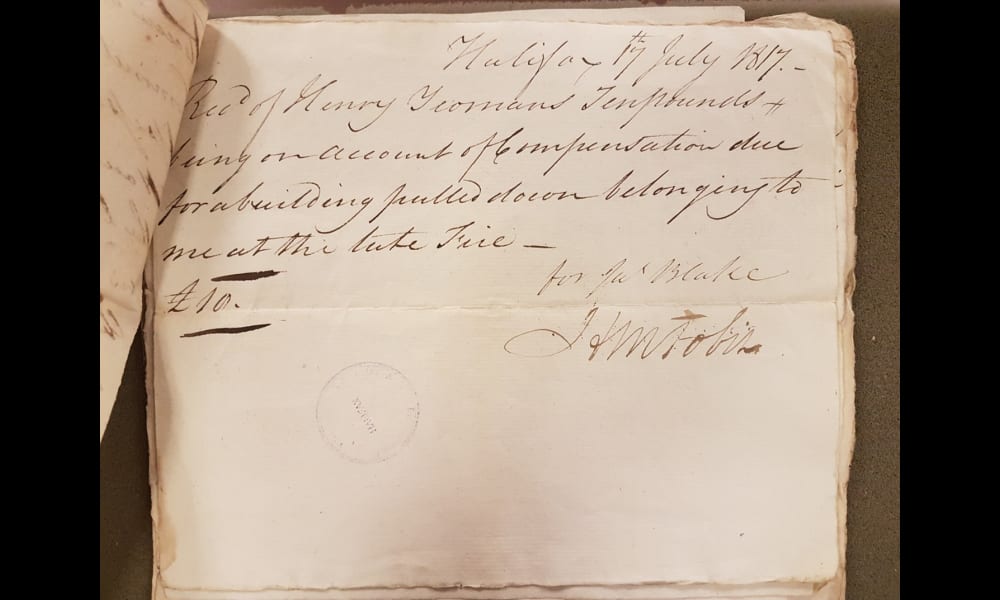In 1817, a formal citizen compensation process was initiated in Halifax to address property losses caused not directly by fire, but by deliberate demolition of houses—a common tactic used to stop the spread of flames.
Background
According to the Act of 1762, if a house was pulled down by order of the Firewards or magistrates to halt a fire, and it was not already on fire, the owner was entitled to compensation from other residents whose properties were spared.
The 1817 Compensation Directive
On June 7, 1817, the Court of Sessions followed this precedent by confirming assessments for fires that had occurred in October, December, and January prior. These assessments were aimed at compensating property owners whose buildings had been pulled down for fire control.
-
A Fire Tax was created to raise the necessary funds.
-
John Boyd was appointed the Collector of the Fire Tax, authorized to collect payments and report anyone refusing or neglecting to pay.
-
If payments were not made voluntarily, coercive measures (likely legal enforcement or seizure) were authorized by the Court.
This was one of the earliest recorded instances in Halifax where citizens were formally compensated via a public tax mechanism for buildings lost due to fire mitigation strategy, rather than fire damage itself.


